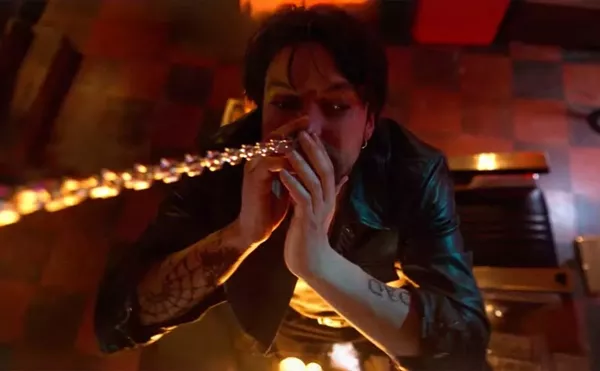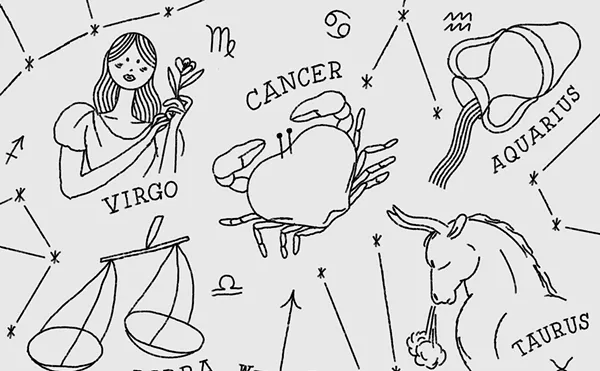
Audio By Carbonatix
[
{
"name": "GPT - Leaderboard - Inline - Content",
"component": "35519556",
"insertPoint": "5th",
"startingPoint": "3",
"requiredCountToDisplay": "3",
"maxInsertions": 100,
"adList": [
{
"adPreset": "LeaderboardInline"
}
]
}
]
Artists are vampires. Filmmakers and actors prey on dreams — and nightmares. They prey upon reality.
Friedrich Wilhelm Murnau (John Malkovich, The Messenger: The Story of Joan of Arc) obsessively grinds the crank of his movie camera. He feeds film through its toothed works, compulsively chewing the reality he’s constructed of set and actors into shadows of the nightmares that inspired it, nightmares trapped in flammable celluloid to be exposed to the artificial sun of a projector’s lamp. Murnau’s nightmares are of a vampire, Nosferatu, the title character of the film he is shooting.
Murnau’s star is an actor of dubious or no renown, Max Schreck (Willem Dafoe, American Psycho) whose obsessively fanatic interpretation of Stanislavsky’s method acting has possessed him to live on location in the ruins of an Eastern European castle. Schreck only appears in full makeup, seeming demonically resurrected from the catacombs. He only comes out at night. The burning bulb of a movie projector is the closest thing he will have to the sun for at least the duration of the shoot. Left alone in his castle, yet ever in character as Nosferatu, Schreck scuttles around the projector like a moth around a flame. He gapes to swallow its beam of light, feeding like a horrible and ironically ancient baby bird on scenes of Murnau’s regurgitated nightmare.
A weird plague seems to settle on the production as if infected by the fiction. Murnau’s exorcised demons seem to possess Schreck with Nosferatu and demand their due. As Schreck takes his toll on Murnau’s crew, the director struggles to leash his actor, if that’s what he still is — or ever was.
Shadow of the Vampire is to Murnau and Schreck as Quills is to the Marquis de Sade. Both films nearly empty their personages of any true historical content in order to use them as masks for characters who dramatize their ideas. By creating facsimiles of scenes from Murnau’s Nosferatu, a Symphony of Horrors, director E. Elias Merhige (Begotten) ironically makes his Shadow of the Vampire a dramatic “re-enactment” of fictionalized events. Merhige mimics but doesn’t re-create Murnau’s use of shadows and symbols, filmmaking that was arguably Hitchcock’s greatest influence.
Shadow of the Vampire could be called more accurately Shadow of Nosferatu, a dramatized essay on art riding the coattails of a modern masterpiece.
E-mail James Keith La Croix at letters@metrotimes.com.





